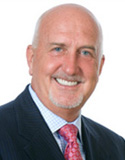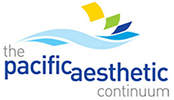
Dr. Thomas Dudney
Dr. Thomas Dudney, Senior Partner and Clinical Program Director for the PAC, recently sat down and answered questions about the significance of why doctors should consider taking a hands-on program such as the many programs offered nationwide by the PAC.
Q. Define live-patient hands-on program.
A. It is a type of program where dentists, accompanied by their appropriate team members, bring one of their own patients to the course to do pre planned and pre-agreed upon clinical procedures under the supervision of an experienced clinical instructor. Hands-on programs allow the doctor and team to receive valuable knowledge and information with lectures and personalized instruction in a clinical setting. Whereas this format can be used for teaching different types of clinical procedures, I am most familiar with hands-on courses that are designed to teach aesthetic dentistry with an emphasis on smile design cases. From the mid 1990s to the mid 2000s, at the height of the aesthetic revolution, these programs were popular with the Las Vegas Institute, founded by Dr. Bill Dickerson; Aesthetic Advantage, founded by Dr. Larry Rosenthal; and PAC-live, founded by Dr. David Hornbrook; to name a few. Currently, some dental schools have begun to incorporate aesthetic programs in their curricula; many smaller programs – some affiliated with dental school and others not – also exist.
Q. What are the benefits of these programs?
A. Most dental students, with few exceptions, receive very little if any training in aesthetic procedures. Therefore, graduates often lack knowledge and confidence to perform procedures that their patients are often requesting. Reading, attending lectures, and joining organizations like the American Academy of Cosmetic Dentistry can all help educate dentists who lack knowledge in aesthetic procedures, but the combination of lectures and clinical training received in a live-patient hands-on program will maximize and accelerate the learning experience. One may want to improve his or her golf game by reading books or watching videos, but it is not as effective as hitting golf balls on a practice tee under the helpful instruction of a qualified professional. Thus, dentists can benefit from taking a live patient hands-on program where they do actual clinical procedures in a clinical setting.
Q. What is the value to the dental team?
A. Because team members are encouraged to attend these courses, they get their share in the learning experience. Therefore, team members are more likely to “buy in” and support their doctor when making necessary changes to accomplish the practice and clinical goals. They also get to interact with other teams and share ideas and information about what is working for them, and what is not. These programs are very good at creating excitement for the team in providing this type of dentistry for their patients and for boosting confidence in clinical skills of their doctor.
Q. What can be done to encourage more professionals to participate in these opportunities?
A. To encourage more participants, sharing information about the value of these programs helps, as do positive testimonials from doctors who have completed these courses. Many programs also allow dentists to audit the course before committing to bringing a patient and their team. Making hands-on courses available to recent graduates at significantly reduced fee could not only help enrollment but also be a positive experience. Some programs, through their laboratory partners, provide scholarships to qualified dentists to help defray costs.
Q. What role do dental laboratories play?
A. Laboratories play an extremely important role! During aesthetic procedures in smile design cases, the dentist must be able to properly communicate with the laboratory team. Patients want restorations that allow them to chew comfortably, speak normally, are long-lasting, and improve appearance. So, the ability to communicate the proper information to the laboratory team is critical to the success of the case. In these courses, proper communication is taught and laboratory personnel are often present to contribute to the learning process. The group I teach with, the Pacific Aesthetic Continuum, is supported by Corr Dental Designs, and either the chief ceramist and training officer, Gary Vaughn or CEO Garrett Caldwell is present at each of the two weekends of every course. In this way, the attending doctors always get to discuss their case one-on-one with the laboratory team members who will be overseeing/fabricating the restorations. Furthermore, the laboratory team benefit because they get to see the restorations seated on the patient instead of only seeing them completed on models.
Q. How do manufacturers and vendors fit into these programs?
A. They, like the laboratory teams, are also important! For example, a diode laser can be very useful in smile design cases, but often, many dentists have never used one. So, under the watchful eyes of their instructor, and sometimes with a demonstration first, doctor-students can carry out a soft-tissue laser procedure on an actual patient. Then, the company representative helps to educate the dentist by making the laser available for hands-on use. This often translates into sales for the manufacturer based upon the right reasons since the doctor can see and experience the benefits the patient receives firsthand. This win-win scenario plays out repeatedly during these live-patient hands-on programs because dental teams are exposed to many new technologies and materials that they not only learn about in a lecture format but, more significantly, also get to use in a real clinical situation.
Q. Any closing comments on why doctors should consider this kind of learning venue?
A. While aesthetic procedures may not be as much in demand as they once were due to economic circumstances, patients are more knowledgable and demanding about dental procedures these days. Therefore, patients will seek out dentists who they believe can deliver the very best aesthetic results. That is why doctors who lack the knowledge, expertise, and skills to confidentially perform this type of clinical dentistry, would greatly benefit from attending a live-patient hands-on program.
If you have questions about my article or if you would like to send a case, please contact the Pacific Aesthetic Laboratory Group at www.pacificaestheticdentalstudio.com, Gary Vaughn, CDT, CTO (916) 786-6740, or via email [email protected].
